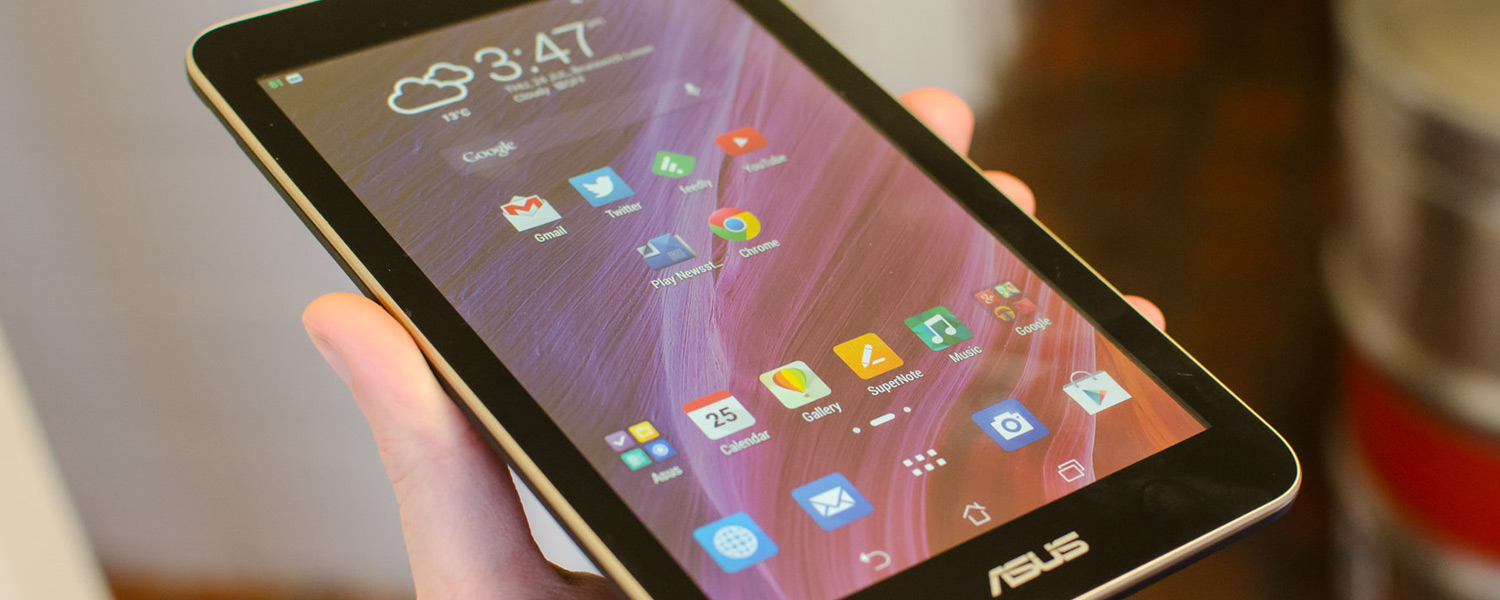Software, Battery Life
Several generations ago, Asus loaded their tablets with near-stock Android, which was pleasant to use but lacking somewhat on the feature side, mostly because the tablet iteration of Android wasn't particularly mature. Fast forward to 2014 and the era of the MeMO Pad 7, and it's a completely different story.
The Pad 7 is loaded with Android 4.4.2 out of the box, complete with a new custom Asus skin that's used across their range of products. While every standard application has been skinned, such as the Contacts, Calendar and Gallery apps, Asus hasn't significantly expanded on the feature sets. The general style used across the operating system looks good, although I have to wonder why they didn't save some money on development and just stick with stock Android.

The homescreen arrangement is a standard 6x6 affair with a few custom Asus widgets, and the lockscreen has a few changeable application shortcuts plus Asus' What's Next functionality. What's Next gives you a quick look at upcoming events in an easy-to-read timeline, also seen as a homescreen widget and standalone application.
The iconic Android notification pane is split into two on the MeMO Pad 7. Swiping down on the left half of the status bar reveals all your system notifications, while swiping on the right half brings up quick toggles and a brightness slider. Some of the toggles open apps, like the camera and calculator, while others control settings like Wi-Fi and power saving mode. The selection of quick toggles is useful, but nothing I haven't seen before.
AudioWizard is one of the app shortcuts in the notification pane, and it gives you a small amount of control over the device's audio processing. You can choose between music, gaming and movie oriented modes, and it does make a slight difference. That said, it's not something I really felt needed adjusting; keeping it on music mode is perfectly fine.

There's several other Asus-made applications loaded onto the MeMO Pad 7, including WebStorage for managing your cloud storage on Asus' service, SuperNote and Quick Memo for note taking, Story for organizing photos into digital albums, and a few other Asus services. While it's good to see some apps like these included on the device, none of them are standouts and you could quite easily find better versions in the Play Store.
While the app offering on the MeMO Pad 7 isn't spectacular, it's not a big deal when you consider you can install many tablet-specific applications from the Google Play Store. A lot of these apps are specifically optimized for 7-inch devices like the Pad 7, so only infrequently will you come across an app that's incompatible with the tablet-sized display.
Battery Life
The internal 15 Wh battery is typical for a tablet of this size: it's the same capacity as the battery found in the 2013 Nexus 7, and just one Wh less than the 2012 version. Through my short time using the MeMO Pad 7 I experienced the battery life to be average in actual use. When the tablet was sitting around in standby mode, the battery seemed to drain faster than on other tablets I've used, which could be a byproduct of the x86 SoC inside.
Don't take my word for it though, below you'll find a few results from my battery benchmarks.


Aside from these few tests, I also recorded a charge time from a 10W charger of over three and a half hours, which is pretty slow in a world with Qualcomm Quick Charge devices. The charger included in the box is just 7W as well, so it could charge even slower if you don't have a more powerful one available. GFXBench also indicates the tablet would only last 195 minutes in intense 3D gaming.
